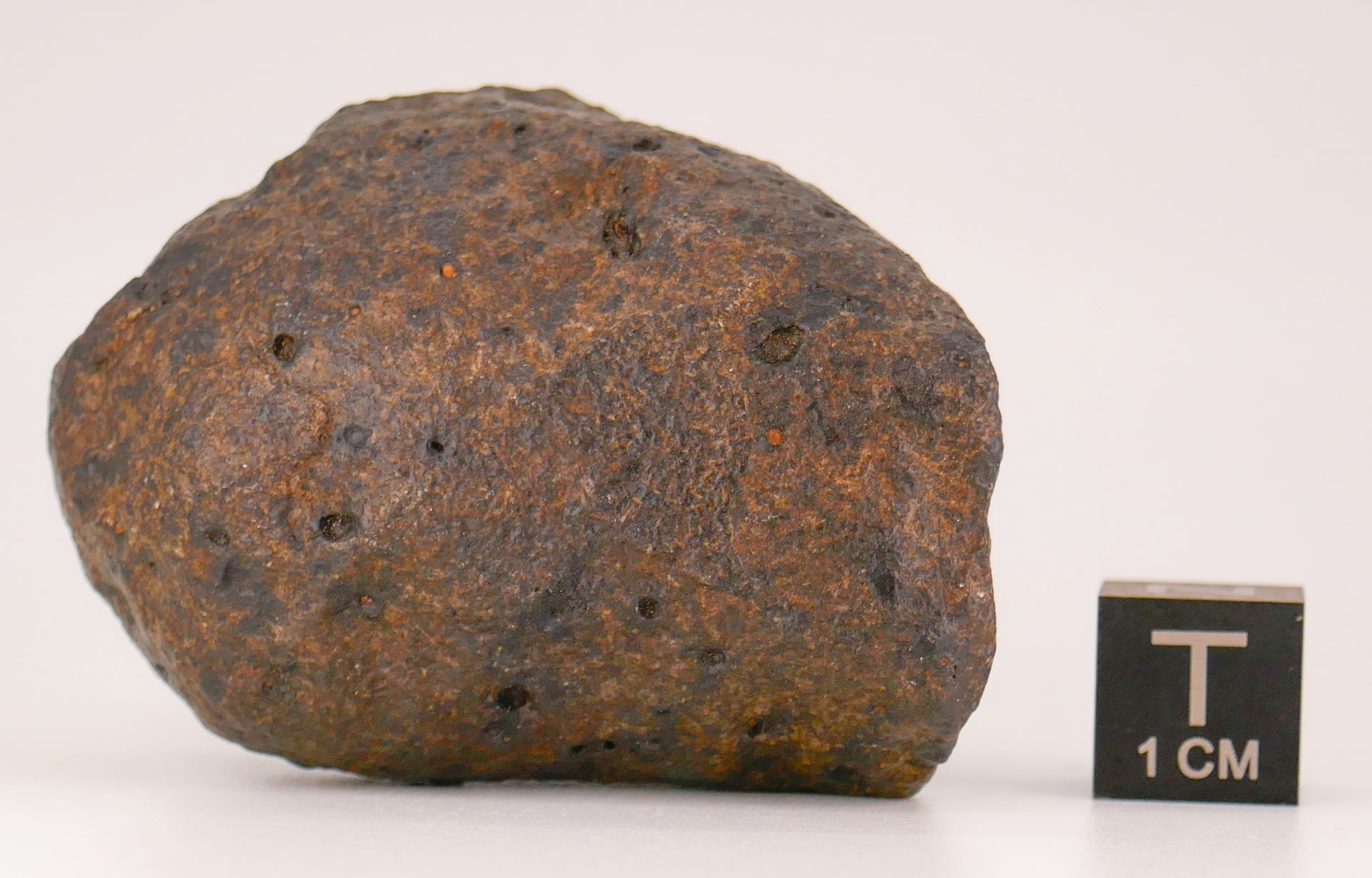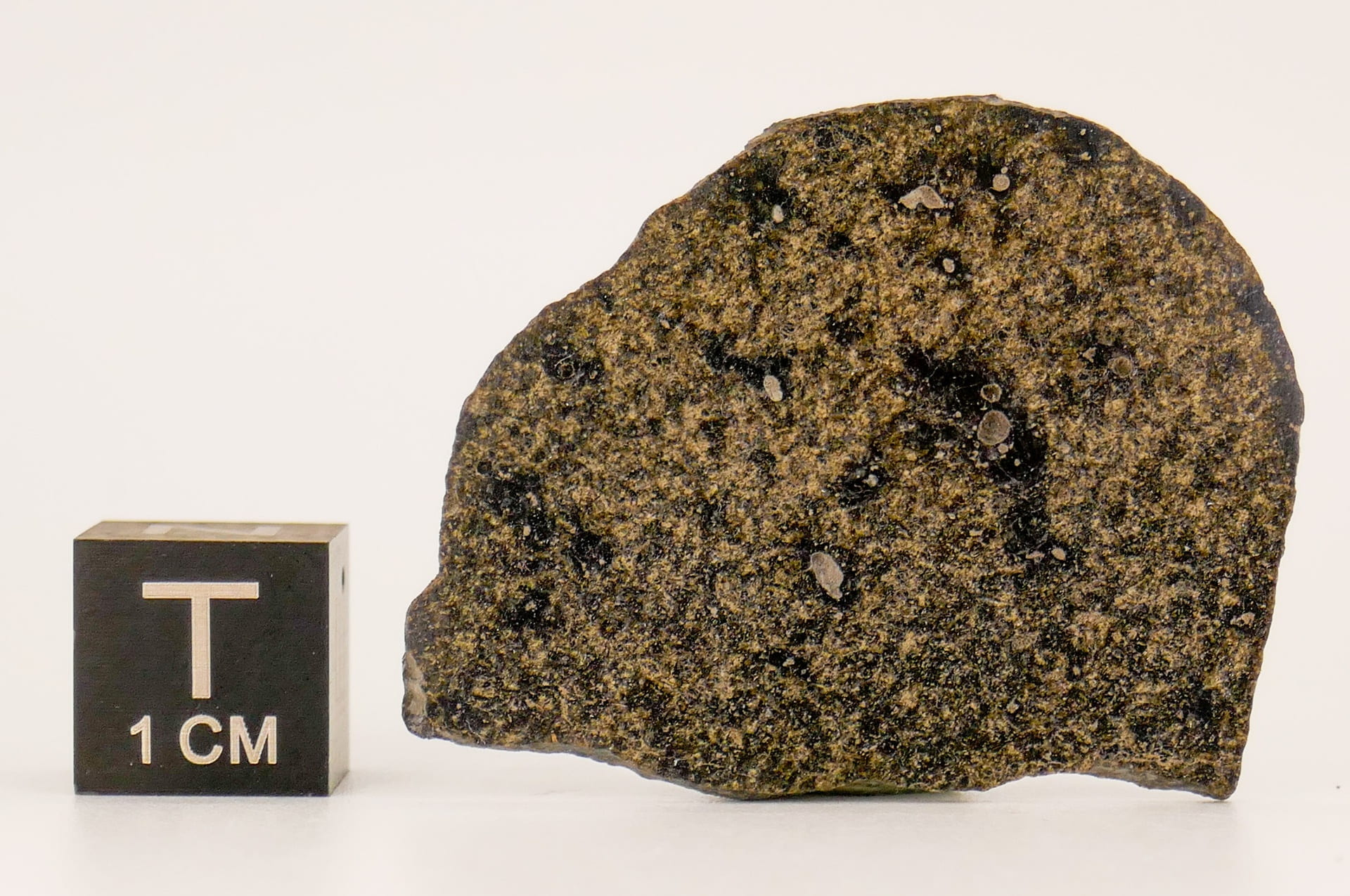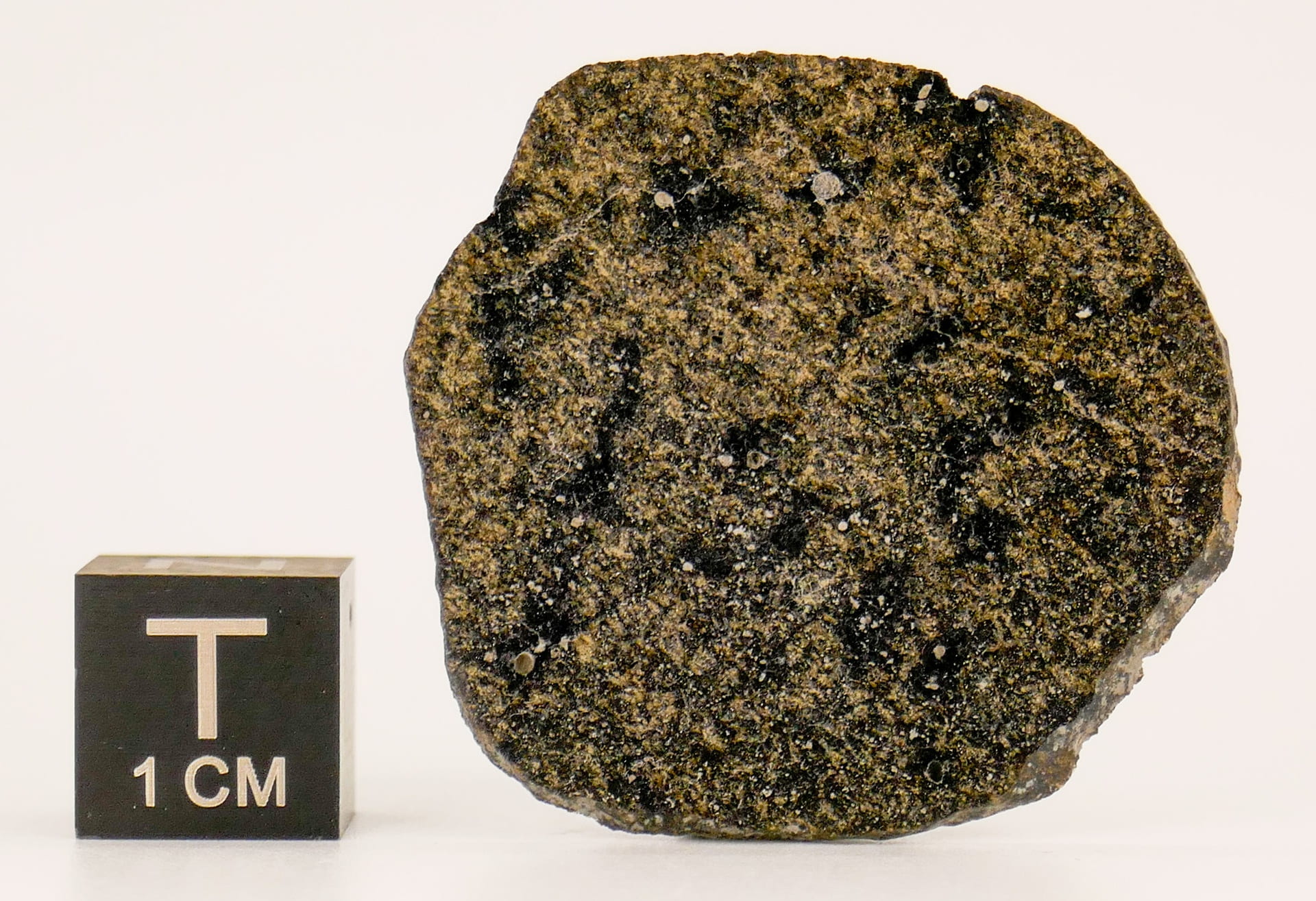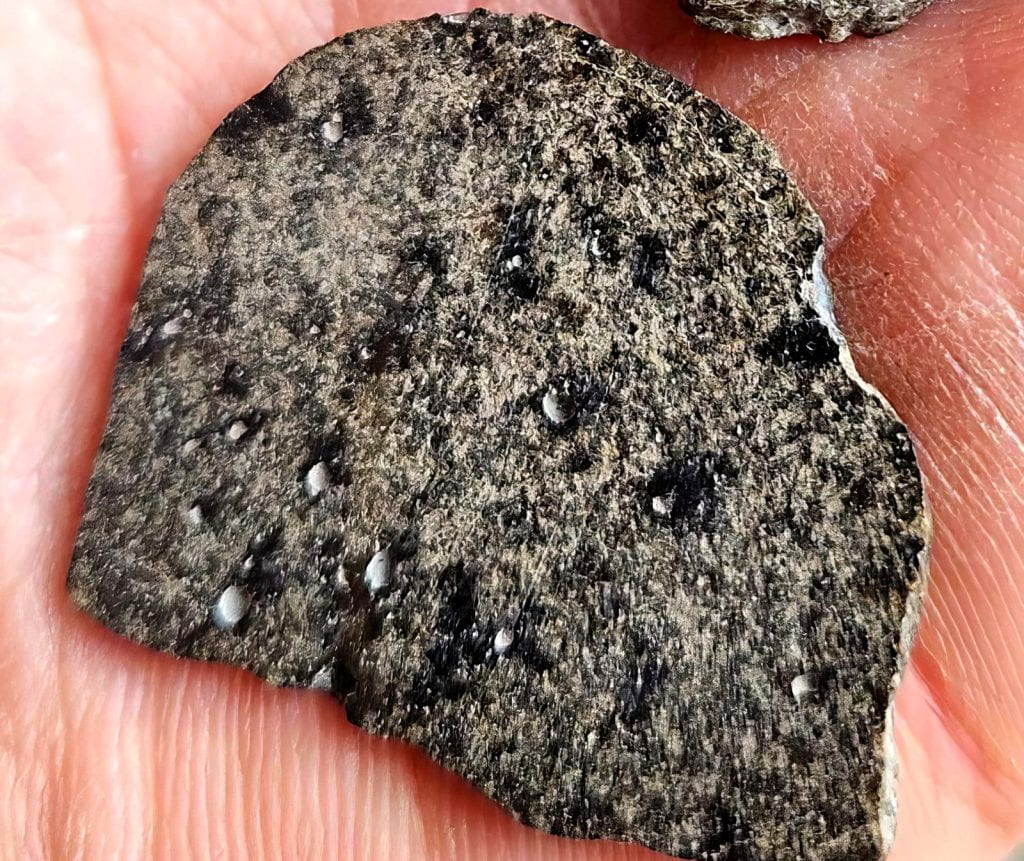Lunar Meteorite: Northwest Africa 14137




| from The Meteoritical Bulletin, No. 110 Northwest Africa 14137 (NWA 14137)(Northwestern Africa) Lunar meteorite (basalt) History: Reportedly found in 2021 and purchased by Doug Chenin in 2021 from a meteorite dealer in Mauritania. Physical characteristics: Single stone, with smooth to irregular exterior surface, no fusion crust present, and numerous vesicles pits visible in hand sample. Polished saw cuts reveal a fine-grained mix of dark-gray and light-brown grains, many dark shock melt pockets present. Unbrecciated. Petrography: (C. Agee, UNM) Backscattered electron images shown igneous-zoned olivines and pyroxenes. Maskelynite makes up approximately 25% of the modal mineralogy, ubiquitous acicular ilmenite ~5%, minor ulvospinel, troilite, chromite and silica observed. Quench melt pockets are present throughout. Geochemistry: (A. Ross and C. Agee, UNM) Olivine Fa57.7±21.1, Fe/Mn=99±4, n=9; clinopyroxene Fs46.1±19.2Wo25.1±5.6, Fe/Mn=64±12, n=12;, maskelynite An88.5±0.8Ab11.0±0.8, n=6. Quench melt SiO2=43.7±0.7, TiO2=4.1±0.3, Cr2O3=0.24±0.08, Al2O3=10.1±1.2, MgO=5.9±1.6, FeO=22.2±1.0, MnO=0.28±0.02, CaO=10.7±0.5, Na2O=0.42±0.16, K2O=0.12±0.05 (all wt%, 30 μm defocused beam), n=8. Clinopyroxene shows Fe-enrichment trends that are continuous from Mg-augite and Mg-pigeonite to subcalcic-ferroaugite/ferropigeonite. Classification: Lunar (mare basalt). Based on the TiO2 content of quench melt this is meteorite transitional between low-Ti and intermediate-Ti mare basalt (Giguere et al. 2000). Specimens: 15.9 g including a probe mount on deposit at UNM, DChenin holds the main mass. |
Randy Says… I have not studied NWA 14137. |
More InformationMeteoritical Bulletin Database NWA 14137 References Giguere T. A., Taylor G. J., Hawke B. R., and Lucey P. G. (2000) The titanium contents of lunar mare basalts. Meteoritics & Planetary Science, 35, 193-200. |